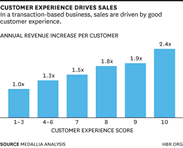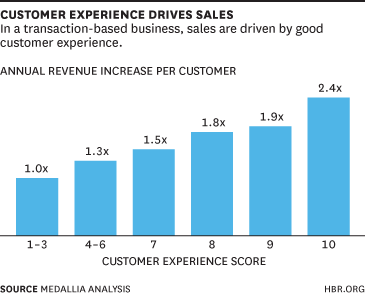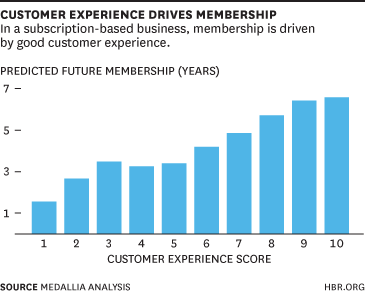The Quantified Value of Great Customer Experience
 When you have a choice of where you do business, you tend to go with the company that you have had a better experience with. Many would refer to that as common sense. Any decent company tries to provide the best customer experience that they can. But when deciding what level of resources you can invest in customer experience, there is a question of how much it is actually worth to the company. What is the value of improving customer experience? That’s what Peter Kriss of Medallia and Vision Prize sought to quantify.
When you have a choice of where you do business, you tend to go with the company that you have had a better experience with. Many would refer to that as common sense. Any decent company tries to provide the best customer experience that they can. But when deciding what level of resources you can invest in customer experience, there is a question of how much it is actually worth to the company. What is the value of improving customer experience? That’s what Peter Kriss of Medallia and Vision Prize sought to quantify.
In an article for the Harvard Business Review, Kriss explains how they did it. They analyzed customer data at two different billion-plus dollar companies. One was a transaction-based business. The other was a relationship-based subscription business. Controlling for an assortment of factors that could skew the data, they took customer feedback and paired it with future spending by those same customers.
Transaction-Based Business
For the transaction-based business, customers were asked what their likelihood to return to the brand was. For the subscription-based business, they were asked how likely they were to recommend the service to others. Both questions were answered on a scale of 1 to 10 and their answer was their customer experience score.
Medallia found that, in the transaction-based business, customers who had the best customer experience spent 140% more than those who rated their experience with a score of 1-3. But even if their customer experience score wasn’t a 10, as long as they were higher than a 3, they spent more money on average. For a score of 4-6, a 30% gain. 7, 50%. 8, 80%. 9, 90%.

Subscription-Based Business
Meanwhile, in subscription-based businesses, they measured customers not in money spent, but in the likelihood that they would remain a member for at least another year. In this case, there is only a 43% chance that a customer with the worst customer experience will be kept. But for customers with a 9 or a 10 customer experience score, the percentage increases to 74%.
Using that data, they were able to predict the future membership length of customers based on their customer experience score. The most unhappy customers will only stay for a little over a year, on average. But the happiest customers will likely continue to subscribe to your services for another 6 years.

What It Means for Online Community
While this isn’t tied directly to online community efforts, that is one of the avenues that companies do invest it when they want to improve customer experience.
“These findings clearly lead to a following question: What do I actually do to improve the experience of my customers?,” Kriss said via email. “The specific answer will of course vary by business – and for every unit within each business – but there are some common themes. One such theme is how to integrate online experience with what your customers encounter in person. So-called “digital native” companies (think Uber or Airbnb) have this baked into their design from the start, while other businesses need to add them to an existing operating model. Creating engaging online communities that address core needs and wants of your customers is equally applicable to both.”
Via Rizzie Vette. Graphs used with permission.
